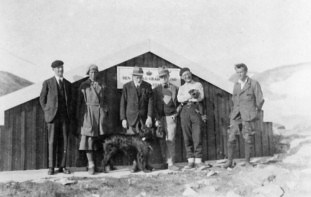The Book Nobody Read: In Pursuit of the Revolutions of Nicolaus Copernicus
Owen Gingerich
2004 William Heinemann/Walker and Company 360pp £12.99/$25.00hb

The world has never lacked seekers of wisdom, however arduous to acquire; seekers of knowledge, however challenging to learn; and seekers of novelty, however threatening to appropriate. This seems to be the fundamental message from Owen Gingerich’s three decades-long study of the reception of and response to Nicolaus Copernicus’s epoch-making book De Revolutionibus (Nurenberg 1543 and Basel 1556). Professionally planned and meticulously executed, The Book Nobody Read is Gingerich’s attempt to share this exploration, which for him was more a personal odyssey than an academic investigation. It is a book about a book and the history of that book.
The genesis of Gingerich’s project is also equally remarkable and unusual. It began in 1959 when Arthur Koestler wrote in his highly acclaimed best-seller The Sleepwalkers that “The Book of the Revolutions of the Heavenly Spheres was and is an all-time worst-seller”. In fact, Koestler called it “the book that nobody read”. This was no casual, inadvertent remark. He substantiated his claim with data and details, which included a comparison of the circulation and reception of similar books of the era. The praise showered on The Sleepwalkers by reviewers added substantial weight to Koestler’s claim.
Although the scholarly world initially agreed with Koestler’s seemingly scholarly surmise, there lingered a certain unease in the minds of serious, reflective scholars. Could De Revolutionibus – a book that changed the course of the history of science, if not of history itself – have been stillborn? Could a book have brought about such a turnaround in our ideas without the active acceptance and appreciation of the scholars of the day? A negative answer in this context is tantamount to believing that scientific revolutions take place by sheer fluke. Thoughts of this nature must have left Gingerich and other like-minded scholars with a certain disquiet, and provoked them to look at the matter anew.
An opportunity presented itself in 1970 when Gingerich stumbled upon a first-edition copy of De Revolutionibus while exploring a huge safe full of rare astronomy books at the Royal Observatory, Edinburgh. On close examination, he found that this was no ordinary copy of a rare book; it was heavily annotated by none other than Erasmus Reinhold, the leading astronomy teacher of northern Europe in the 1540s.
Questions filled Gingerich’s mind. Do any other copies still survive? Where can they be located? What can they tell us about Copernicus’s new theory or about the reception accorded to De Revolutionibus by the leading scholars and thinkers of the day? This was the genesis of The Book Nobody Read and its forerunner An Annotated Census of Copernicus’ De Revolutionibus.
Gingerich thus began a chase for original copies of the book that took him to centres of learning around the globe – from Aarhus to Beijing, from Coimbra to Dublin, from Melbourne to Moscow, and from St Gallen to San Diego. The present book is Gingerich’s “personal memoir” about the making of the census.
The theme of the book at first sight may appear drab and dry – a humdrum secretarial task of collecting and cataloguing the first and second editions of De Revolutionibus. It may even look too ordinary to engage an accomplished scholar and expert. But far from being a dead catalogue of copies, it becomes a scholarly study of a book that is full of life.
Gingerich’s book unfolds into a masterly study of the history of astronomy and of various hard astronomical theories. It includes little known facts about well-known personalities, should-know facts about little-known persons, as well as accounts of destructive tensions and constructive collaborations between scholars and experts. In fact, one is led to conclude that a project of this diversity and magnitude could have been accomplished only by a scholar of wide knowledge, deep insights and passionate commitment.
Gingerich’s persistent, professional, indefatigable, decades-long chase brought rich dividends and Koestler was proven dead wrong. Far from being a book that nobody read, De Revolutionibus, which discussed whether the Earth orbits the Sun, was seriously studied by many outstanding astronomers of the day, as revealed by the extensive and erudite marginalia on many copies. The expert research on these marginalia becomes a study of how the new Copernican perspective grew in the minds of contemporary scholars and how it was gradually accepted by the intelligentsia of the day.
Copies of the first editions were owned by saints like the Jesuit Aloysius Gonzaga, heretics like Giordano Bruno, scholars like John Dee and Thomas Diggs, and geniuses like Tycho Brahe, Galileo and Kepler. Kings, musicians, medicine men and bibliomaniacs even boasted of treasuring it. The hitherto incomplete list in the census has already traced over 600 copies.
Autobiographical in style, the book brings to light much information and insights, some for the first time, at least for non-experts. Tucked inside the pages are pieces of information like Galileo’s “little taste for the details of celestial mechanics”, Bruno’s unfamiliarity with important Copernican ideas, the explanation for the “Tower of the Winds” at the Vatican, and an account of Tycho Brahe’s marriage to a woman of unequal class. The long story about Gingerich’s tracing of the Vatican copy of Copernicus reveals a feat of scholarly, smart sleuthing.
In recounting the story of his own peregrinations, the author takes readers on an informative and exciting tour of the most prestigious libraries of the world, and gives an insight into the politics and intrigue that accompany such operations. Weaved into the book is a great deal of historical, scientific, sociological, religious and cultural information. Another noteworthy feature is the author’s extensive, detailed and painstaking study done on the marginalia, which has yielded many valuable and otherwise inaccessible insights.
Although many careful readers may find the occasional repetitions in the book unnecessary and distracting, those who are less familiar with astronomy and the history of science may find them helpful. This book will therefore appeal to many different readers, including astronomers, historians, book-lovers and biographers. With many personal and professional anecdotes, plus witty and critical observations, the text reads like a detective novel. I would re-christen Gingerich’s book as “The Book Everybody Could Read” – with much delight and great profit.



